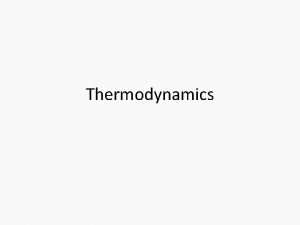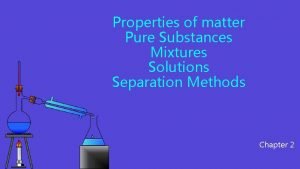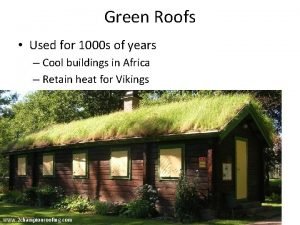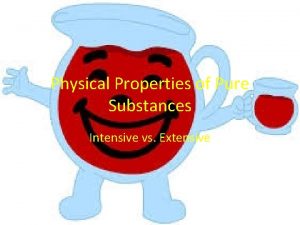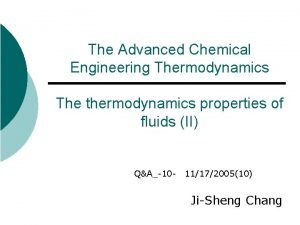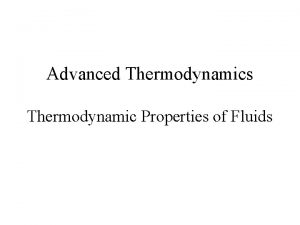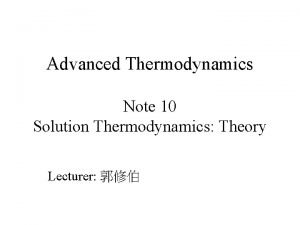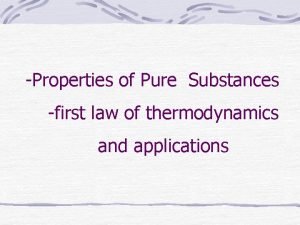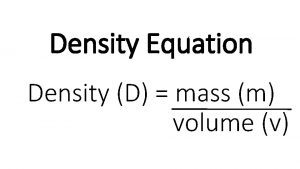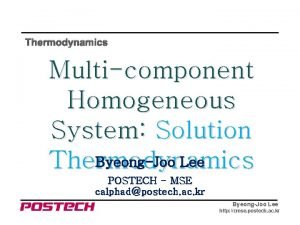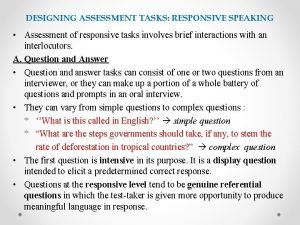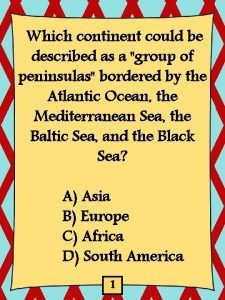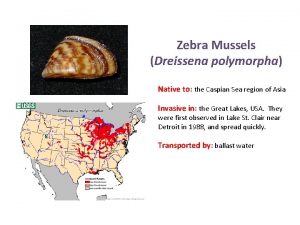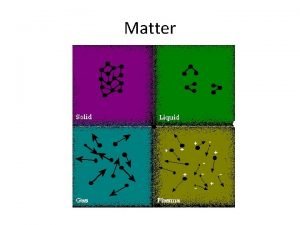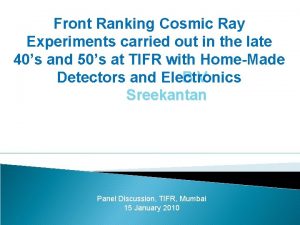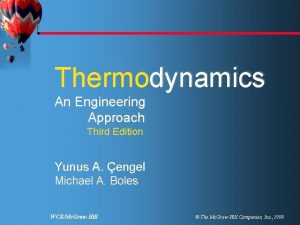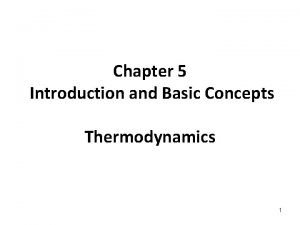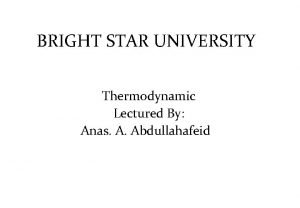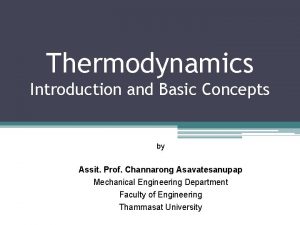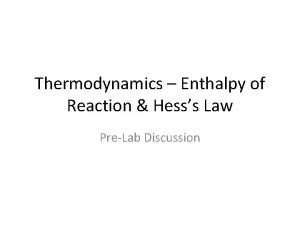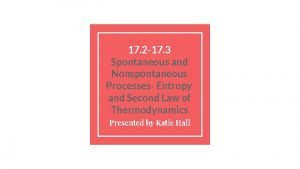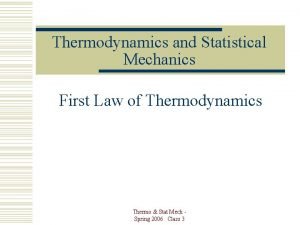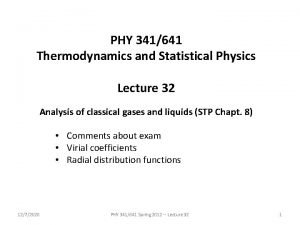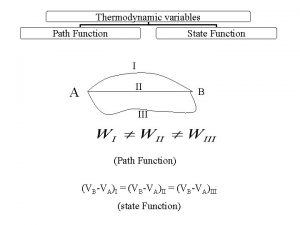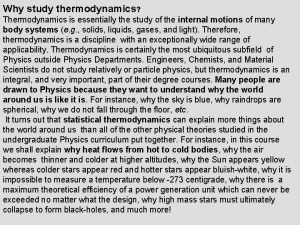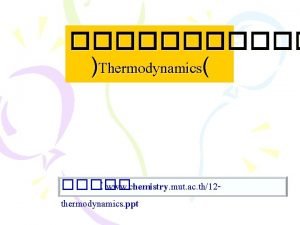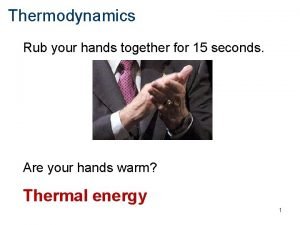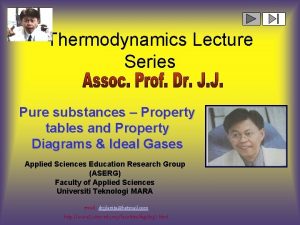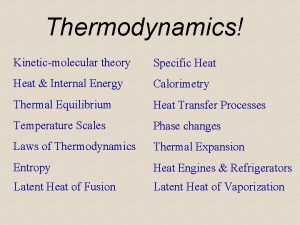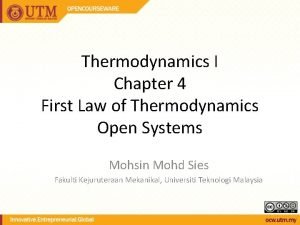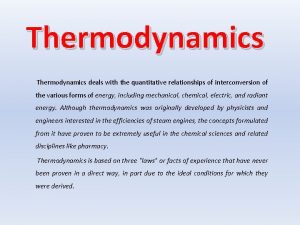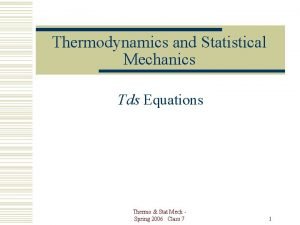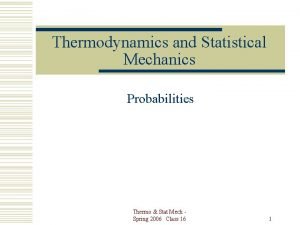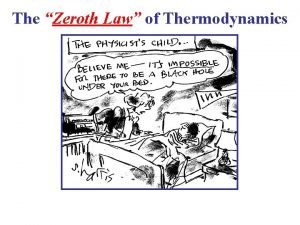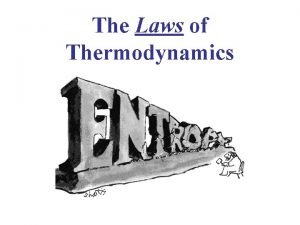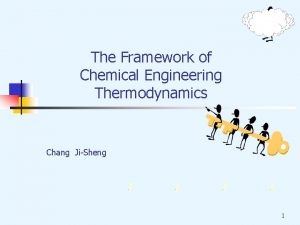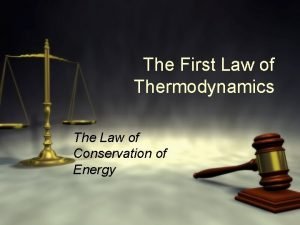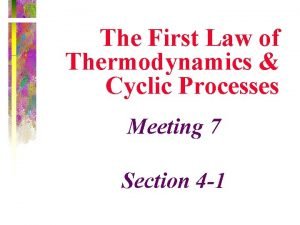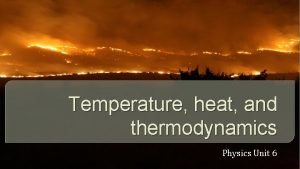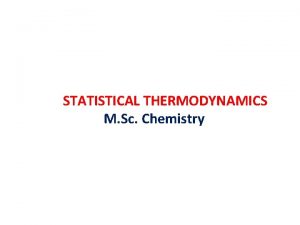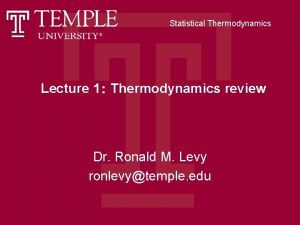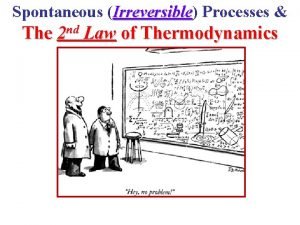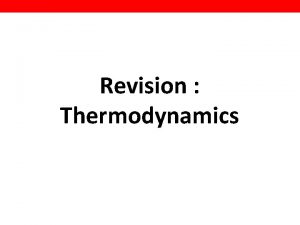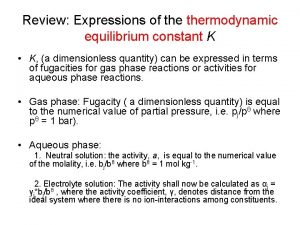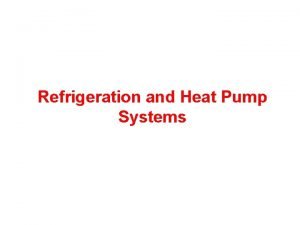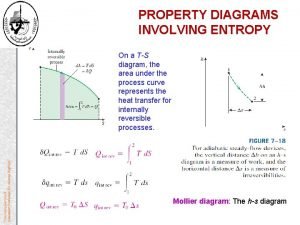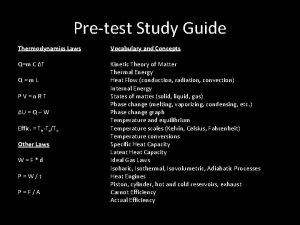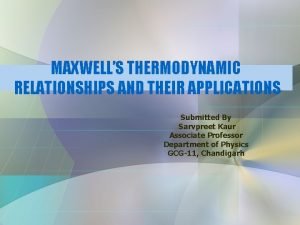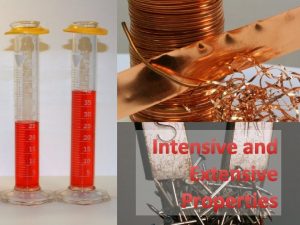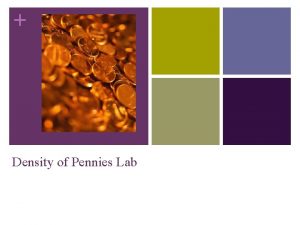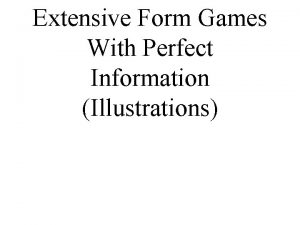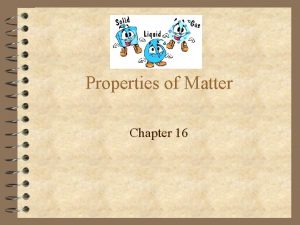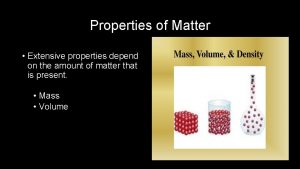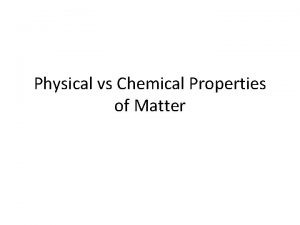Thermodynamics Intensive and extensive properties Intensive properties System








































































- Slides: 72

Thermodynamics

Intensive and extensive properties • Intensive properties: – System properties whose magnitudes are independent of the total amount, instead, they are dependent on the concentration of substances • Extensive properties – Properties whose value depends on the amount of substance present

State and Nonstate Functions • Euler’s Criterion • State functions – Pressure – Internal energy • Nonstate functions – Work – Heat



Energy • Capacity to do work • Internal energy is the sum of the total various kinetic and potential energy distributions in a system.










Heat • The energy transferred between one object and another due to a difference in temperature. • In a molecular viewpoint, heating is: – The transfer of energy that makes use of disorderly molecular motion • Thermal motion – The disorderly motion of molecules

Exothermic and endothermic • Exothermic process – A process that releases heat into its surroundings • Endothermic process – A process wherein energy is acquired from its surroundings as heat.


Work • Motion against an opposing force. • The product of an intensity factor (pressure, force, etc) and a capacity factor (distance, electrical charge, etc) • In a molecular viewpoint, work is: – The transfer of energy that makes use of organized motion















Free expansion ΔU Isothermal Isochoric 0 Isobaric q+w q wrev wirrev 0 0 -pextΔV Adiabatic

Adiabatic Changes • q=0! • Therefore ΔU = w • In adiabatic changes, we can expect the temperature to change. • Adiabatic changes can be expressed in terms of two steps: the change in volume at constant temperature, followed by a change in temperature at constant volume.

Adiabatic changes • The overall change in internal energy of the gas only depends on the second step since internal energy is dependent on the temperature. • ΔUad = wad = n. CvΔT for irreversible conditions

Adiabatic changes • How to relate P, V, and T? during adiabatic changes? Use the following equations! • Vi. Tic = Vf. Tfc – Where c = Cv/R • Pi. Viγ = Pf. Vfγ – Where γ = Cp/Cv

Adiabatic changes •



Free Isothermal expansion ΔU 0 q wrev 0 wirrev 0 Isochoric Isobaric Adiabatic n. CvΔT q+w w n. CvΔT n. CpΔT or – wirrev 0 -pextΔV =-n. CvΔT =-pextΔV 0

1. 2. Exercise 10 g of N 2 is obtained at 17°C under 2 atm. Calculate ΔU, q, and w for the following processes of this gas, assuming it behaves ideally: (5 pts each) a) Reversible expansion to 10 L under 2 atm b) Adiabatic free expansion c) Isothermal, reversible, compression to 2 L d) Isobaric, isothermal, irreversible expansion to 0. 015 m 3 under 2 atm e) Isothermal free expansion (Homework) 2 moles of a certain ideal gas is allowed to expand adiabatically and reversibly to 5 atm pressure from an initial state of 20°C and 15 atm. What will be the final temperature and volume of the gas? What is the change in internal energy during this process? Assume a Cp of 8. 58 cal/mole K (10 pts) 1 cal = 4. 184 J





Enthalpy • As can be seen in the previous derivation, at constant pressure: • ΔH = n. CpΔT

Relating ΔH and ΔU in a reaction that produces or consumes gas • ΔH = ΔU + pΔV, • When a reaction produces or consumes gas, the change in volume is essentially the volume of gas produced or consumed. • pΔV = Δng. RT, assuming constant temperature during the reaction • Therefore: › ΔH = ΔU + Δng. RT

Dependence of Enthalpy on Temperature • The variation of the enthalpy of a substance with temperature can sometimes be ignored under certain conditions or assumptions, such as when the temperature difference is small. • However, most substances in real life have enthalpies that change with the temperature. • When it is necessary to account for this variation, an approximate empirical expression can be utilized

Dependence of Enthalpy on Temperature • Where the empirical parameters a, b, and c are independent of temperature and are specific for each substance • Integrate resulting equation for Cp appropriately in order to get ΔH

Free expansion ΔU Isothermal Isochoric Isobaric Adiabatic 0 n. CvΔT q+w w n. CvΔT n. CpΔT or – wirrev 0 q wrev 0 wirrev 0 ΔH 0 -pextΔV =-n. CvΔT =-pextΔV 0 (for ideal gas) ΔU =ΔU + pΔV =n. CpΔT Adiabatic

Problem • Calculate the change in molar enthalpy of N 2 when it is heated from 25°C to 100°C. N 2(g) Cp, m (J/mol K) a =28. 58; b = 3. 77 x 10 -3 K; c = -0. 50 x 105 K 2

Problem • Water is heated to boiling under a pressure of 1. 0 atm. When an electric current of 0. 50 A from a 12 V supply is passed for 300 s through a resistance in thermal contact with it, it is found that 0. 798 g of water is vaporized. Calculate the molar internal energy and enthalpy changes at the boiling point. * 1 A V s = 1 J

Thermochemistry • The study of energy transfer as heat during chemical reactions. • This is where endothermic and exothermic reactions come in. • Standard enthalpy changes of various kinds of reactions have already been determined and tabulated.

Standard Enthalpy Changes • ΔHƟ • Defined as the change in enthalpy for a process wherein the initial and final substances are in their standard states – The standard state of a substance at a specified temperature is its pure form at 1 bar • Standard enthalpy changes are taken to be isothermal changes, except in some cases to be discussed later.

Enthalpies of Physical Change • The standard enthalpy change that accompanies a change of physical state is called the standard enthalpy of transition • Examples: standard enthalpy of vaporization (Δvap. HƟ) and the standard enthalpy of fusion (Δfus. HƟ)



Enthalpies of chemical change • These are enthalpy changes that accompany chemical reactions. • We utilize a thermochemical equation for such enthalpies, a combination of a chemical equation and the corresponding change in standard enthalpy. • Where ΔHƟ is the change in enthalpy when the reactants in their standard states change to the products in their standard states.



Hess’s Law • Standard enthalpies of individual reactions can be combined to acquire the enthalpy of another reaction. This is an application of the First Law named the Hess’s Law • “The standard enthalpy of an overall reaction is the sum of the standard enthalpies of the individual reactions into which a reaction may be divided. ”

Hess’s Law: Example

Standard Enthalpies of Formation • The standard enthalpy of formation, denoted as Δf. HƟ, is the standard reaction enthalpy for the formation of 1 mole of the compound from its elements in their reference states. • The reference state of an element is its most stable state at the specified temperature and 1 bar. • Example: Benzene formation 6 C (s, graphite) + 3 H 2(g) C 6 H 6 (l) Δf. HƟ = 49 k. J/mol



The temperature dependence of reaction enthalpies • d. H = Cpd. T • From this equation, when a substance is heated from T 1 to T 2, its enthalpy changes from the enthalpy at T 1 to the enthalpy at T 2.


Kirchhoff’s Law • It is normally a good approximation to assume that Δr. CpƟ is independent of temperature over a limited temperature range, but when the temperature dependence of heat capacities must be taken into account, we can utilize another equation

Dependence of Enthalpy on Temperature • Where the empirical parameters a, b, and c are independent of temperature and are specific for each substance • Integrate resulting equation for Cp appropriately in order to get ΔH

Kirchhoff’s Law: Example

Exercise
 Intensive properties in thermodynamics
Intensive properties in thermodynamics Difference between intensive and extensive properties
Difference between intensive and extensive properties Fractional distillation of alcohol
Fractional distillation of alcohol Example of intensive verb
Example of intensive verb Basic types of speaking
Basic types of speaking Real definition of extensive reading
Real definition of extensive reading For adult
For adult Ineffictive
Ineffictive Sedum roof lambeth
Sedum roof lambeth Is boiling point intensive or extensive
Is boiling point intensive or extensive A poem skimming scanning extensive intensive
A poem skimming scanning extensive intensive Intensive or extensive
Intensive or extensive Residual properties in thermodynamics
Residual properties in thermodynamics Advanced thermodynamics
Advanced thermodynamics Fugacity coefficient
Fugacity coefficient Properties of pure substances thermodynamics
Properties of pure substances thermodynamics Difference between open and closed system
Difference between open and closed system Mass m, volume v and density d are correlated as
Mass m, volume v and density d are correlated as Extensive and ambitious vocabulary
Extensive and ambitious vocabulary First law of thermodynamics equation open system
First law of thermodynamics equation open system Homogeneous system in thermodynamics
Homogeneous system in thermodynamics What are the main features of analyzed system?
What are the main features of analyzed system? The extensive reading foundation
The extensive reading foundation Extensive network data storage (nds)
Extensive network data storage (nds) Truck farming ap human geography
Truck farming ap human geography Speaking order sample
Speaking order sample Chapter 11 study guide business and technology
Chapter 11 study guide business and technology The geographic feature most responsible for extensive trade
The geographic feature most responsible for extensive trade Extensive culture
Extensive culture Extensive
Extensive Extensive
Extensive Categorical or quantitative
Categorical or quantitative Extensive air showers
Extensive air showers Nash equilibrium definition
Nash equilibrium definition Commercial kitchen exhaust cleaning philadelphia pa
Commercial kitchen exhaust cleaning philadelphia pa Physical properties of ice cube
Physical properties of ice cube Thermodynamics cengel and boles
Thermodynamics cengel and boles Introduction and basic concepts of thermodynamics
Introduction and basic concepts of thermodynamics Irreversible process in thermodynamics
Irreversible process in thermodynamics Thermodynamics introduction and basic concepts
Thermodynamics introduction and basic concepts Thermodynamics enthalpy of reaction and hess's law
Thermodynamics enthalpy of reaction and hess's law Non spontaneous process
Non spontaneous process Dulong petit law
Dulong petit law Thermodynamics and statistical mechanics
Thermodynamics and statistical mechanics State vs path function
State vs path function Open closed isolated system
Open closed isolated system Circularory system
Circularory system Why do we study thermodynamics
Why do we study thermodynamics Thermodynamics ppt
Thermodynamics ppt What is thermodynamics equilibrium
What is thermodynamics equilibrium H********** mixture
H********** mixture Internal energy formula thermodynamics
Internal energy formula thermodynamics Throttling device
Throttling device Thermodynamics deals with
Thermodynamics deals with Tds equation
Tds equation Thermodynamic probability
Thermodynamic probability 0th law of thermodynamics definition
0th law of thermodynamics definition Third law of thermodynamics derivation
Third law of thermodynamics derivation Zeroth law of thermodynamics statement
Zeroth law of thermodynamics statement Engineering thermodynamics
Engineering thermodynamics First law of thermodynamics
First law of thermodynamics 1th law of thermodynamics
1th law of thermodynamics Laws of thermodynamics simple
Laws of thermodynamics simple Statistical thermodynamics in chemistry
Statistical thermodynamics in chemistry Maxwell relations
Maxwell relations In a spontaneous irreversible process
In a spontaneous irreversible process Entropy change formula
Entropy change formula Thermodynamics equation sheet
Thermodynamics equation sheet Thermodynamic equilibrium definition
Thermodynamic equilibrium definition Cop of refrigerator
Cop of refrigerator Entropy thermodynamics
Entropy thermodynamics Thermodynamics study guide
Thermodynamics study guide Maxwell's thermodynamic relations
Maxwell's thermodynamic relations
